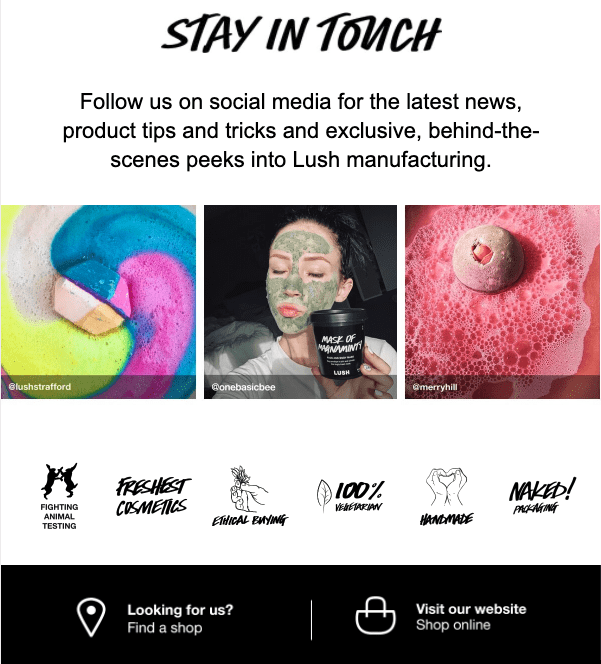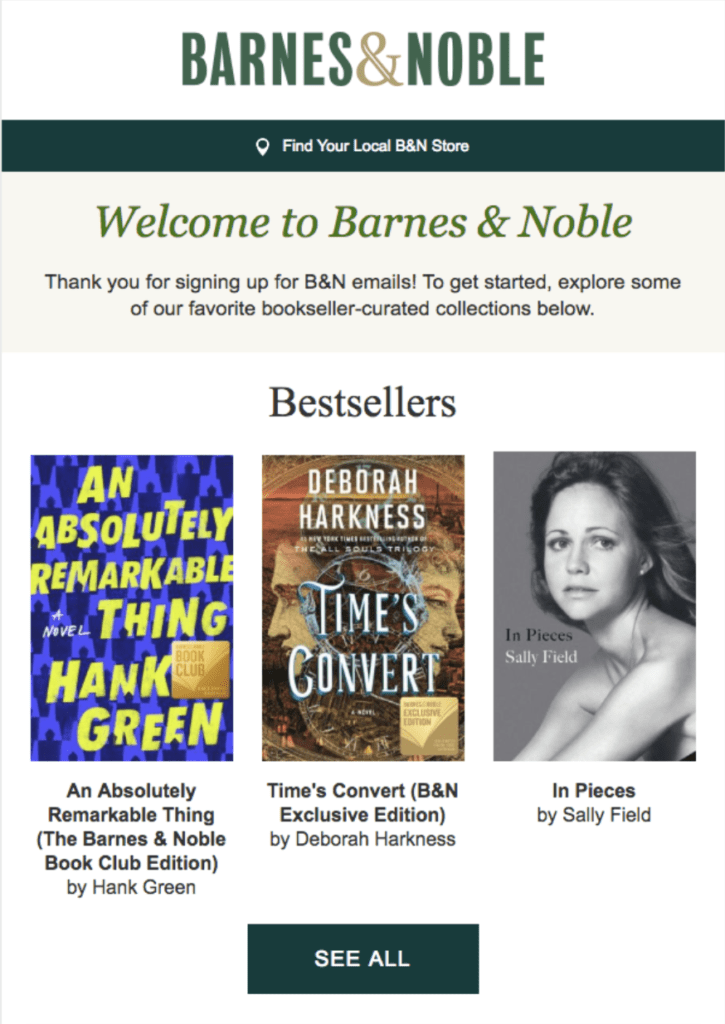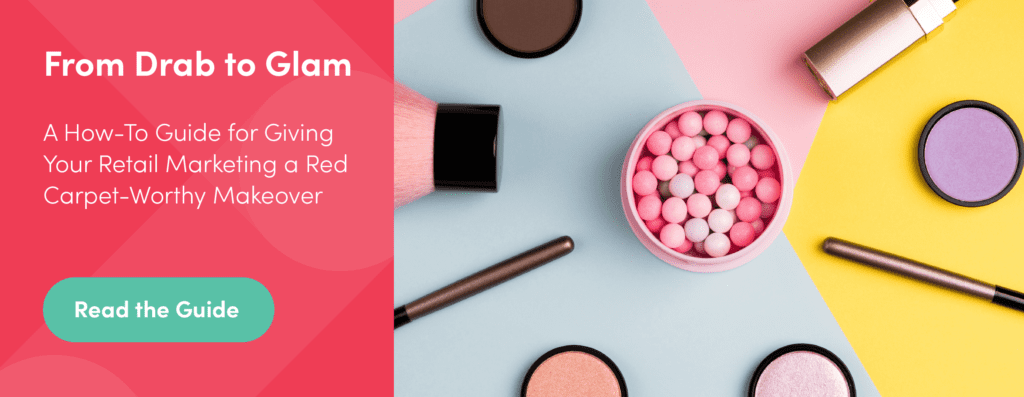Hi there! Welcome to our blog. No matter how you found yourself on this page, we are honored to host you for a few minutes of reading (and a few minutes of watching) to learn a bit about welcome campaigns.
Everybody has their go-to phrases upon first meeting someone. It can be as simple as introducing your name or as extroverted as diving into a personal story. Each welcome is unique in what it tells you about the person, even if there is overlap in stylistic choices.
The same can be said about how brands employ the welcome campaign. There may be similar tactics and styles, but ultimately, brands set themselves apart by showcasing their differentiators.
A particularly quirky message. Exceptional design. Tailored recommendations. These are all ways in which you can level up the customer experience and kick the consumer-brand relationship off on the right foot.
In this post, we’ve highlighted three common trends currently being utilized by retail and e-commerce brands. Towards the end, you will find recommended strategies to enhance these trends for a more impactful welcome campaign.
Not a fan of reading? Take a look at this quick video to see more about retail welcome campaigns and the best strategies to take them to the next level!
3 Popular Welcome Campaign Trends
1. Set the Stage
The first trend we’ve found is one we actually employed in our introduction above: setting the stage for your users.
Modern consumers are more experienced with online shopping but that doesn’t mean they know everything about your brand before subscribing. Marketers have been smart to level-set in the welcome campaign by providing lists of what users can expect.
These lists can cover the perks of subscribing, like this one from beauty brand e.l.f. Cosmetics that outlines what benefits users can expect. This email, in particular, is great because the messaging is succinct while also showing off the e.l.f. brand’s tone with fun phrasing like “pleased to perk you.”


Minimal copy can help in highlighting the pertinent info for new users.
Brands have also used this tactic to highlight the features that most help users take advantage of all their businesses have to offer, and this trend isn’t limited to the beauty industry.
Content creation platform, nDash, uses its welcome campaign to walk users through the different features needed to complete the user profile. Such a list is a great way to help guide the user, while simultaneously filling out the user profile on the backend for the marketer to inform future campaigns and enrich the customer experience.


If your brand has a lot of features, it’s best to lay them out for users early on. Source: Really Good Emails
The welcome campaign is a great opportunity to lead the user and even gamify onboarding so they can check off all the items on their to-do list. Setting the stage like these brands have done with introductory lists keeps everything in one place for the user and gets them started on the customer journey.
2. Introduce Yourself and What You Stand For
Next up, we have a trend that has grown considerably in the last few years: highlighting company values and origins.
It doesn’t feel outlandish to say that people hold strong beliefs. And almost a quarter of those people want to buy from companies that share in those beliefs. As you probably guessed, marketers have taken notice.
Welcome campaigns have become a natural home for a brand to share its company story, culture and values. However, the execution of this strategy manifests in many ways.
The example we’ve seen is an excellent double whammy of highlighting the company’s values while collecting user preference data. Cosmetics brand Lush didn’t put its values front-and-center in the welcome campaign, but it did include them as icons towards the bottom of the email.


Learning what’s important to users can be just as useful as knowing what products they want.
Each of these icons directs the user to a unique URL for each value, describing how Lush and its products exemplify the virtues of that value. In doing so, the company can collect data about which values speak to users most prominently.
We have also seen values and company cultures shown in the form of messages from spokespeople—often the CEO or founder. Brands like beauty and wellness retailer goop look to humanize the experience and shrink the gap between consumer and brand by attaching a name—and sometimes a face—to a message.
So much of marketing these days is about individualizing and humanizing the experience that we can often forget that humans are the ones creating the experience for users. More and more brands are giving a peek behind the curtain to give the customer journey a more relatable feel.
3. Welcome! Here’s Some Cool Stuff
The last trend we’re seeing lately in welcome campaigns: recommendations.
Now, with such an emphasis on personalization, you’d think recommendations are best fit for promotions once the brand has learned a bit more about the user’s preferences. While still true in many ways, the breadth of use cases for recommendations has grown.
With the help of data feeds and historical data across user segments, brands are able to more effectively—and efficiently—send recommendations right from the first message as a great way to begin collecting personalized data.
Beauty brand Beauty Bay double-dipped in its welcome email by providing us with links to “must-haves,” which sent users to a dynamic list of products, followed by top picks for us that more closely resembled targeted recommendations often found in promotions.


Show users your best self through some of your best, most popular products.
By testing both styles, Beauty Bay is able to understand which kind of recommendations users prefer. The must-haves section also shows users the brand’s expertise and gives insight into which products—and product categories—the company excels in.
Of course, makeup brands aren’t the only ones capitalizing on recommendations–every business can leverage this trend. Bookstore Barnes & Noble does something similar by recommending books from a variety of different categories (Teen Books, Non-Fiction, Page to Screen) as a way to get users started.


If you have a wide range of product categories, recommendations like these can help users get started. Source: Really Good Emails
Recommendations in the welcome campaign serve as a way to get the user started while also collecting important information for future recommendations.
Quick Wins to Level Up Your Welcome Campaign
Trends are great. They give us a look into what others have done to see successes. But you’re probably wondering, “How do I take these trends and stand out at the same time?”
Good question!
Rather than making you wait any longer, here are three quick wins you can start using today to level up your welcome campaigns.
- Progressive Profiling: You don’t have to get everything done in one message. Take your time. Multi-touch campaigns that use progressive profiling—collecting information in small bits rather than all at once—allow marketers to focus more on specific messaging to make sure every benefit or feature gets its turn in the spotlight. Your brand is awesome, create campaigns that allow you to show that!
- Leverage Data: Your routine emails don’t need to be custom-built every time. Use data feeds to make the process efficient. With data feeds, you are incorporating information that you already have, so you won’t be starting from scratch. (Pro Tip: Make them even more efficient by using Iterable’s Catalog, which means you won’t have to rely on engineering resources).
- Go Cross-Channel: Welcome users to your brand on any device and through every channel you have at your disposal—email, snail mail, SMS, mobile push, social, you name it. Meet the customer where they are. User preferences go beyond just products; they reach channels as well.
Laying Out the Red Carpet Welcome Mat
The welcome campaign serves many purposes, but its arguably most important function is establishing a close connection from the get-go. In doing so, the welcome campaign is setting the stage for increased customer lifetime value.
And that’s the root of this conversation (and all marketing), really—finding a way to connect that is impactful and has a long shelf life. Take the above trends and strategies into account when building out your welcome campaigns. If you can successfully marry them with your brand, you’ll find yourself building personalized relationships with users for a long time.
Learn all about welcome campaigns—and a lot more—in our guide to giving your marketing a red carpet-worthy makeover. Download the guide today!































